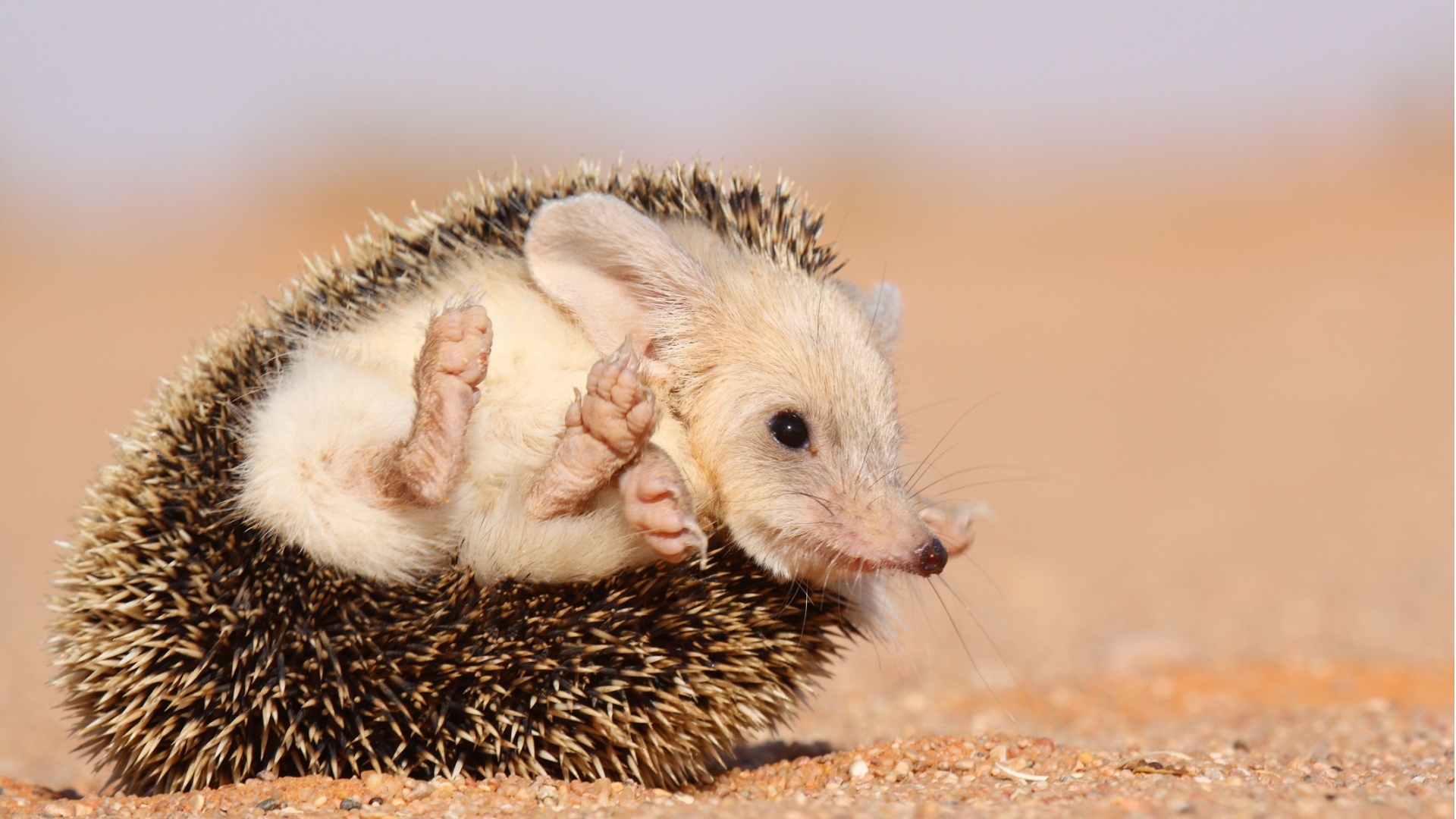Deserts are some of the most extreme environments on Earth, characterized by harsh conditions such as intense heat, scarce water, and limited vegetation.
Despite these challenges, a remarkable array of animals have adapted to not only survive but thrive in these arid landscapes.
Let’s see which incredible animals call the desert their home, each with unique adaptations and survival strategies.
1. Fennec Fox
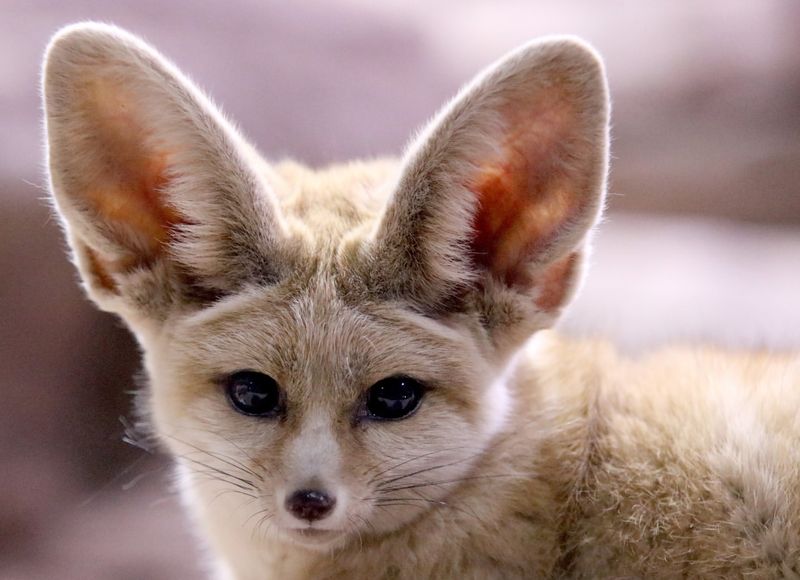
The fennec fox, known for its enormous ears, is a fascinating resident of the Sahara Desert. These ears are not just for hearing; they help dissipate heat, keeping the fox cool. Weighing just under 1.5 kg, the fennec fox is perfectly adapted to a life with limited water. It extracts moisture from its food and has kidneys designed to retain water efficiently.
Living in burrows, these foxes are nocturnal, venturing out at night to hunt insects, small mammals, and birds. Their fur, a creamy color, reflects sunlight during the day and retains heat at night. Socially, fennec foxes live in small communities, often consisting of up to ten individuals. These communities are crucial for thermoregulation and protection.
Their playful nature makes them interesting subjects for study, demonstrating complex social behaviors and communication skills.
2. Camel
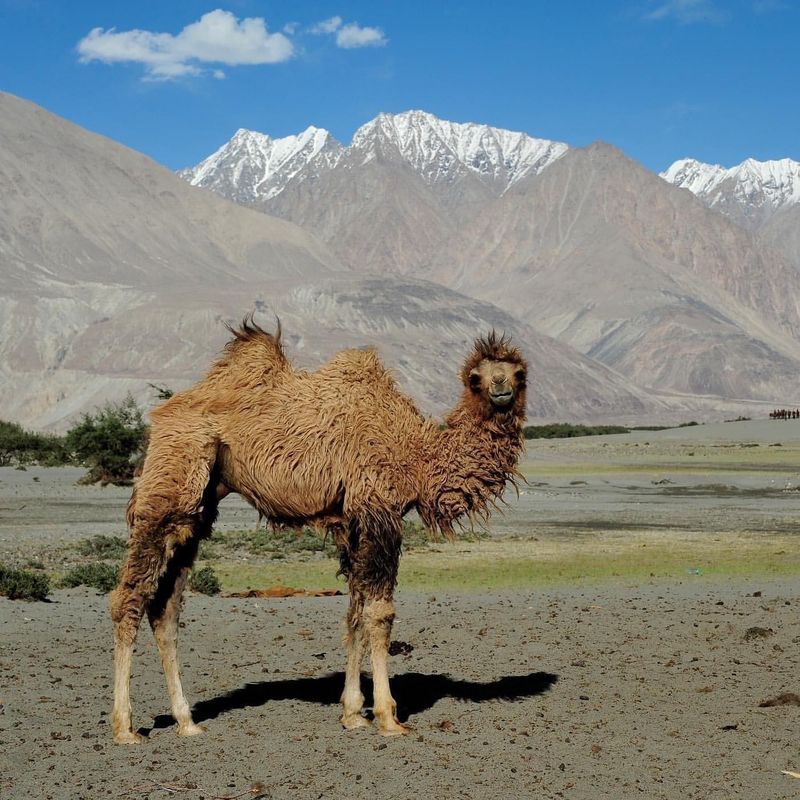
Camels are often referred to as the “ships of the desert,” and for good reason. Their adaptations to desert life are nothing short of extraordinary. The most iconic feature is their hump, which stores fat that can be converted into water and energy when food is scarce. This allows them to travel long distances without water.
Camels have thick lips that enable them to eat thorny plants, and their long eyelashes and sealable nostrils protect against sand. Their feet are wide and padded, preventing them from sinking into the sand. Not just beasts of burden, camels are crucial to desert economies, providing milk, meat, and transportation.
Domesticated for thousands of years, they remain indispensable in desert cultures. Their calm demeanor and resilience make them a fascinating study in adaptation and survival.
3. Desert Tortoise
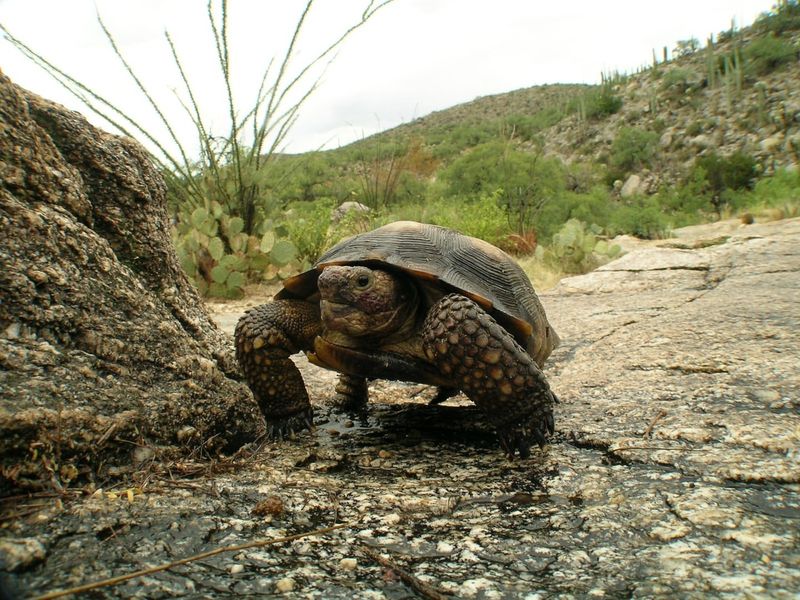
These remarkable creatures are well-suited to life in arid environments like the Mojave and Sonoran deserts. These tortoises have adapted to conserve water by spending up to 95% of their lives in underground burrows, escaping the heat and preserving moisture.
Their diet consists mainly of grasses, wildflowers, and cacti, which provide the necessary hydration. They can survive a year or more without direct access to water, thanks to their ability to store water in their bladders.
In the face of predators, their hard shells offer protection, while their slow metabolism reduces energy needs. Desert tortoises are considered a keystone species, playing a critical role in their ecosystem by dispersing seeds and maintaining the desert vegetation balance.
4. Gila Monster
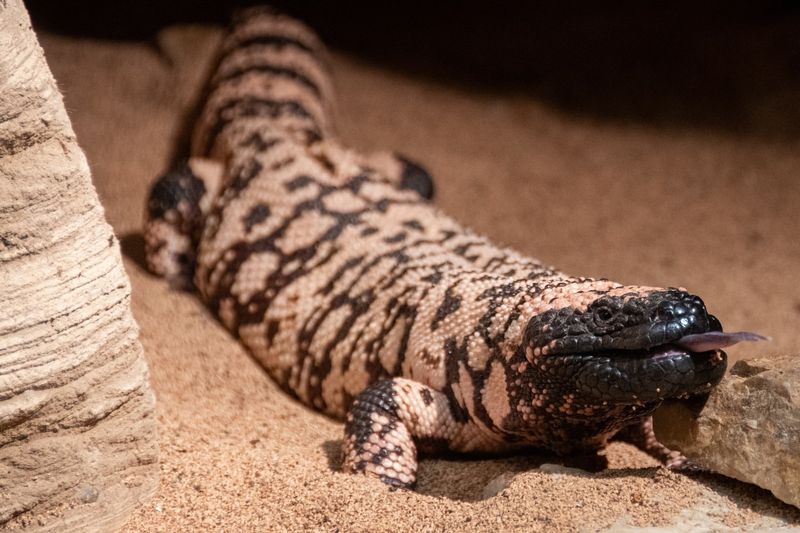
One of the few venomous lizards in the world, and it inhabits the arid regions of the southwestern United States. Its bright coloration serves as a warning to predators. Although slow-moving, this lizard’s venomous bite is powerful, making it a formidable predator.
Gila monsters spend the majority of their lives underground, emerging primarily during the cooler parts of the day to hunt for birds, eggs, and small mammals. They have a slow metabolism, which means they can survive on a few meals a year.
Their unique bead-like skin is not only beautiful but also serves a practical purpose, helping to retain moisture and protect against the harsh sun. Gila monsters are an important part of desert ecosystems, controlling populations of other animals and thus maintaining ecological balance.
5. Addax Antelope
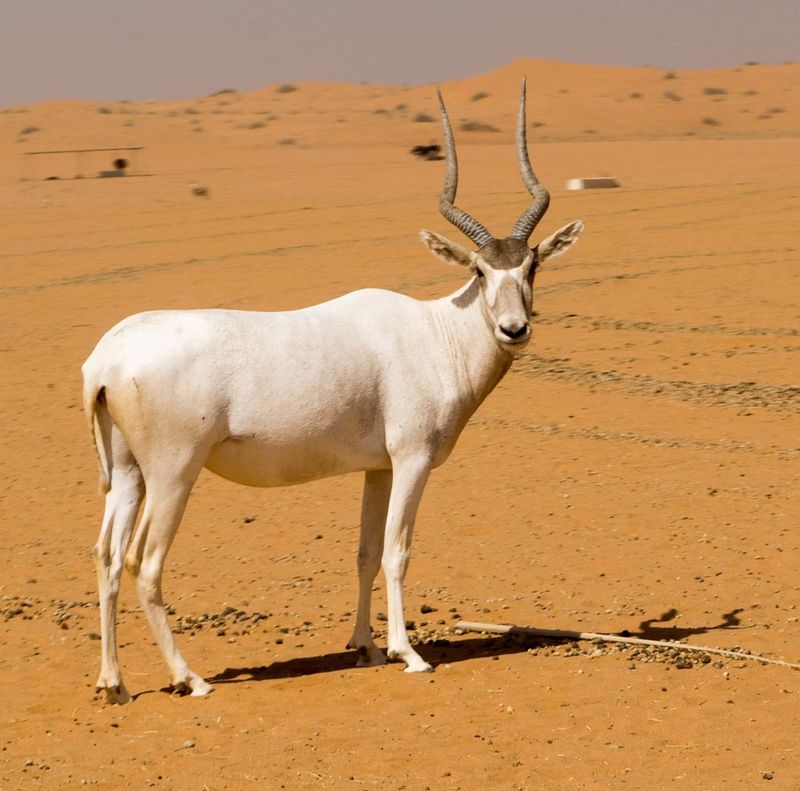
The addax antelope, also known as the white antelope, is critically endangered and perfectly adapted to desert life. Found in isolated areas of the Sahara, addaxes are well-suited to survive without water for extended periods. They derive moisture from the vegetation they consume.
With a coat that changes color with the seasons—white in summer to reflect sunlight and darker in winter to absorb heat—addaxes are thermoregulation experts. Their wide hooves prevent them from sinking into the sand, allowing for efficient travel across their habitat.
Social animals, addaxes live in herds led by a dominant male. These herds are essential for protection and social interaction. Despite their endangered status, conservation efforts are underway to preserve and increase their populations, highlighting the importance of biodiversity in desert ecosystems.
6. Kangaroo Rat
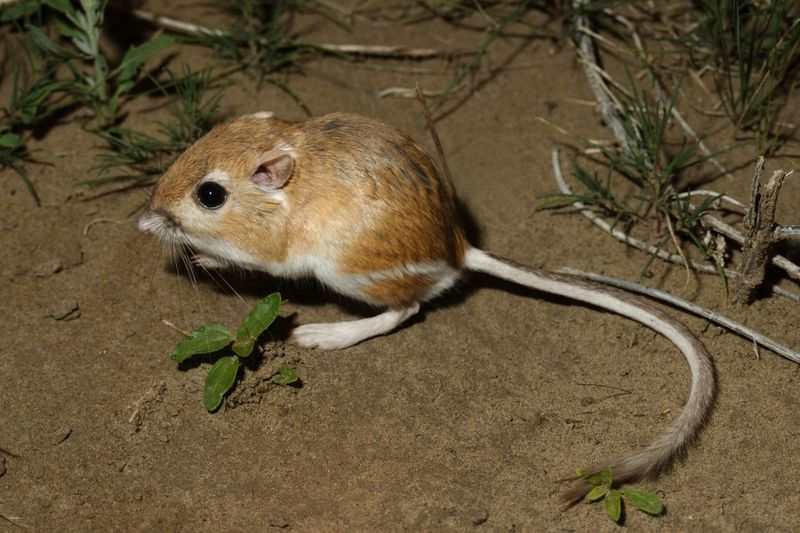
These masters of desert survival thrive in the arid conditions of North America’s desert regions. Named for their powerful hind legs, these rodents are capable of impressive leaps to escape predators. They never need to drink water, obtaining all necessary hydration from their diet of seeds and vegetation.
Living in burrows during the day, kangaroo rats emerge at night to forage, avoiding the extreme daytime temperatures. Their cheek pouches allow them to carry and store food efficiently.
With acute hearing, these nocturnal creatures can detect the subtle movements of potential threats, making them highly evasive. Their ability to thrive without free water is a testament to their evolutionary adaptations, making them a subject of interest for scientists studying desert ecology.
7. Thorny Devil
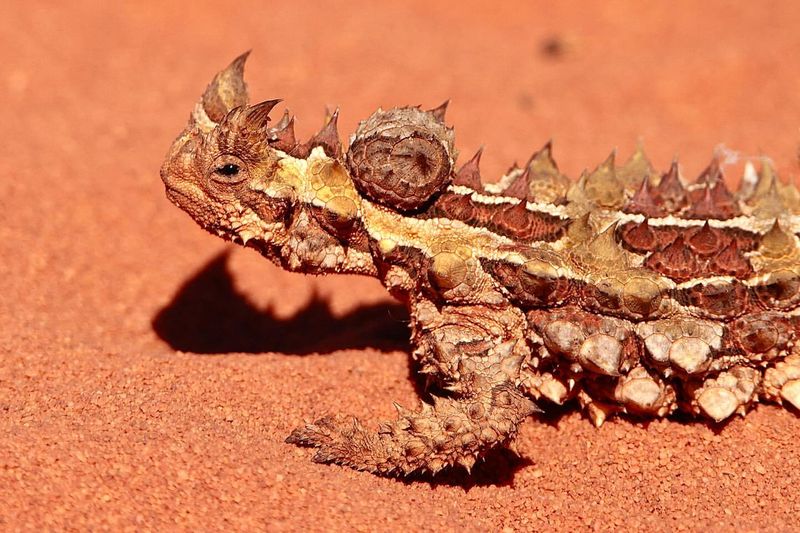
This unique and fascinating lizard native to the arid scrublands of Australia. Its body is covered in sharp spines, which deter predators and aid in collecting water. Dew and rain are channeled along the grooves between the spines directly to the mouth.
This lizard’s coloration provides excellent camouflage, blending seamlessly with the desert landscape. Its movement is slow and jerky, mimicking a piece of debris blown by the wind, thus avoiding detection by predators.
Feeding almost exclusively on ants, the thorny devil is well adapted to its environment, requiring little other than its primary food source. Despite its fearsome appearance, it is harmless to humans and plays a vital role in controlling ant populations in its habitat.
8. Meerkat
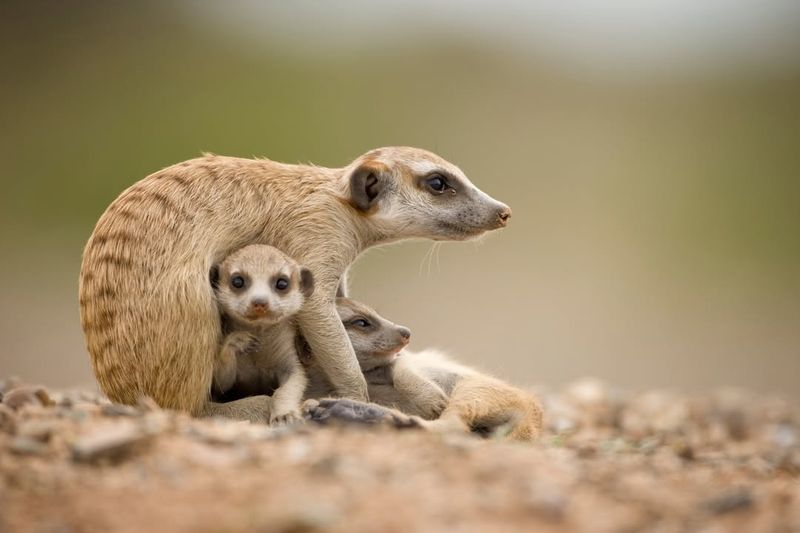
Meerkats are charismatic and social animals, thriving in the harsh conditions of the Kalahari Desert. Living in large groups known as mobs, they cooperate in hunting and vigilance, ensuring the safety and survival of the colony.
Their diet includes insects, small reptiles, and plants, providing necessary hydration and nutrition. Meerkats have a specialized immunity to certain venoms, allowing them to eat scorpions and snakes.
Throughout the day, one meerkat stands guard while others forage, showcasing their cooperative nature. These animals are known for their intricate social structures and communication skills, making them a favorite among wildlife enthusiasts and researchers alike.
9. Sonoran Desert Toad
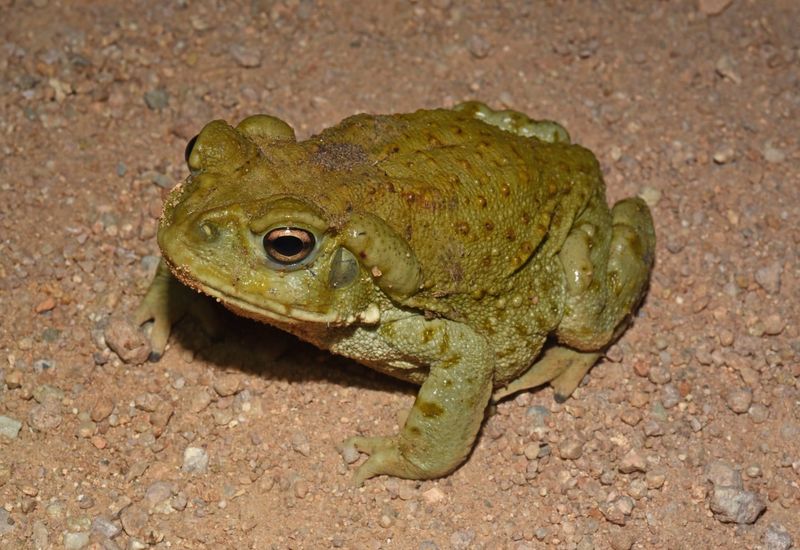
The Sonoran Desert toad, also known as the Colorado River toad, is a resilient amphibian thriving in the arid regions of the southwestern United States. Remarkably, it emerges from underground burrows during the summer rains, an event that triggers breeding and feeding activities.
This toad possesses glands that secrete a potent toxin, deterring predators and offering a distinctive defense mechanism. Its diet primarily consists of insects and small vertebrates, captured with its sticky tongue.
Adapted to extreme conditions, the Sonoran Desert toad can absorb water through its skin, a crucial adaptation in a water-scarce environment. This ability allows it to endure prolonged periods without direct access to water, demonstrating a fascinating example of amphibian survival in deserts.
10. Cactus Wren
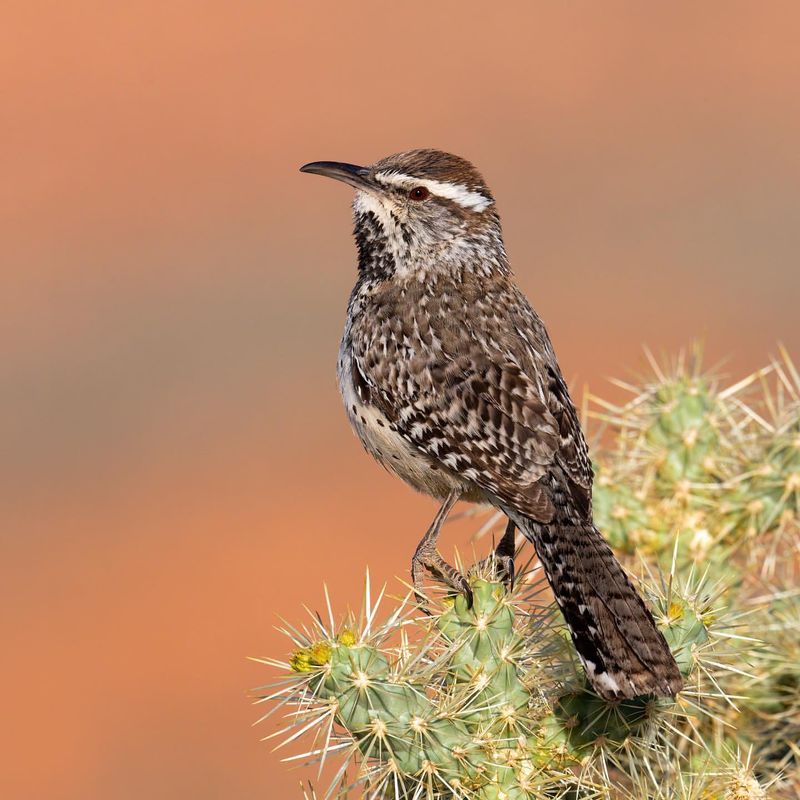
This resilient bird found in the arid regions of the Southwestern United States and Mexico. Known for its loud and distinctive call, this bird builds its nest in the protective spines of cacti, safe from predators.
Cactus wrens are omnivorous, feeding on insects, spiders, and occasionally seeds and fruits. Their diet provides the necessary hydration, allowing them to thrive without constant access to water sources.
Adaptable and opportunistic, cactus wrens are a symbol of desert resilience. They are known to fiercely defend their territory against intruders, showcasing their strong survival instincts.
Their presence is essential for the balance of the desert ecosystem, controlling insect populations and aiding in seed dispersal.
11. Jerboa
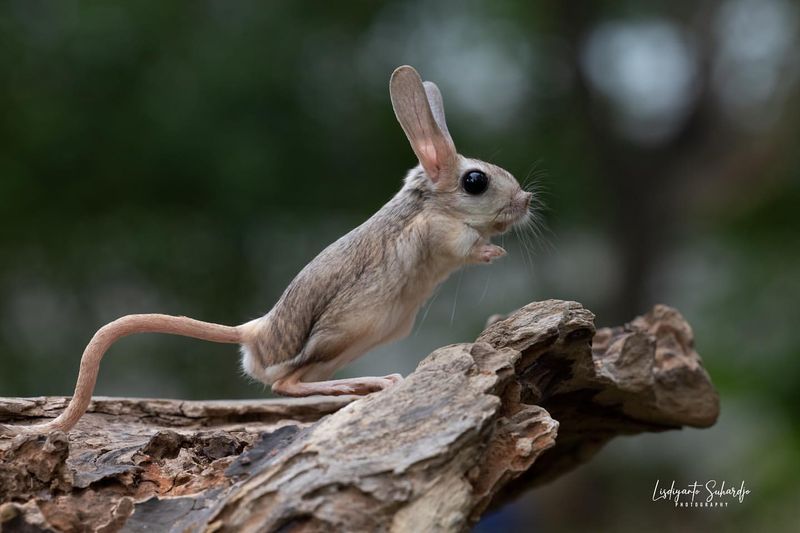
Jerboas are small, hopping rodents native to the deserts of North Africa and Asia, including the Gobi Desert. With their long hind legs, they move in a manner similar to kangaroos, making them highly efficient at covering ground quickly to escape predators.
These nocturnal animals live in burrows and are rarely seen during the day, avoiding the scorching heat. Their large eyes and ears provide excellent night vision and hearing, essential for navigating the desert at night.
Jerboas do not drink water; instead, they extract all the hydration they need from their food, which primarily consists of seeds and insects. This ability to survive without direct water sources makes them a remarkable example of adaptation to desert living.
12. Sand Cat
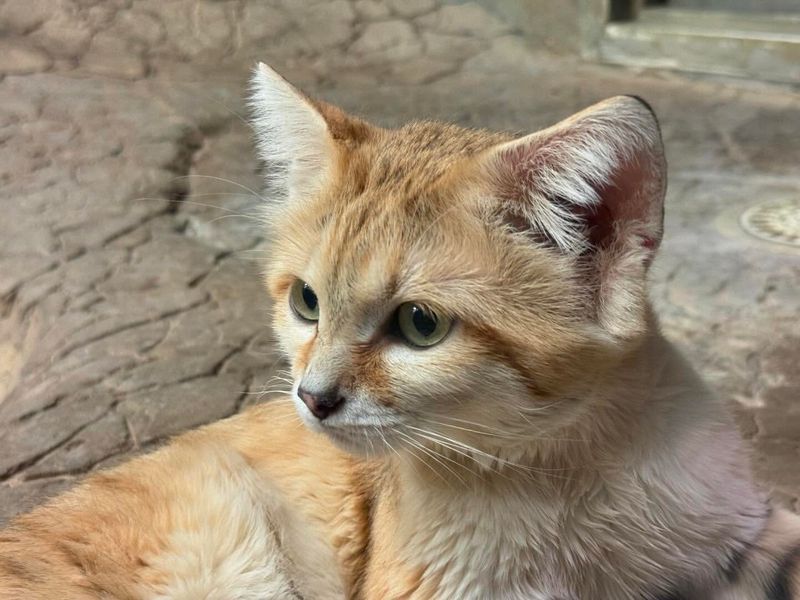
This small and elusive feline inhabits the deserts of North Africa, the Middle East, and Central Asia. Its thick, sand-colored fur not only provides camouflage but also insulates against extreme temperatures.
Unlike other big cats, the sand cat is perfectly adapted to desert life. It does not need to drink water, deriving all necessary moisture from its prey, which includes rodents, birds, and reptiles.
Sand cats are nocturnal hunters, using their acute sense of hearing to locate prey underground. Their feet are covered with dense fur, protecting them from hot sand and allowing silent movement.
Despite their elusive nature, they play a crucial role in controlling rodent populations, highlighting their importance in desert ecosystems.
13. Scorpion
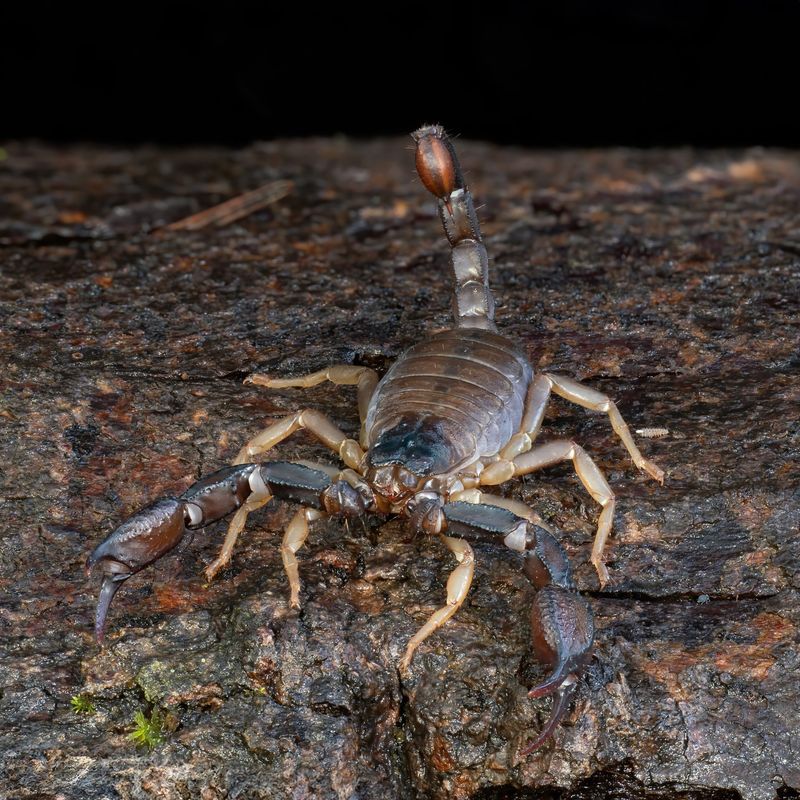
Scorpions are one of the most iconic desert inhabitants, known for their resilience and adaptability. Found in deserts worldwide, these arachnids have evolved to withstand extreme temperatures and scarce water. Their exoskeleton reduces water loss, and they can slow their metabolism to survive on minimal resources.
Scorpions are nocturnal, hiding under rocks and in burrows during the day to avoid the heat. Their diet consists of insects and small animals, which they capture with their pincers and immobilize with venomous stings.
Despite their fearsome reputation, scorpions play a vital role in maintaining the balance of desert ecosystems by controlling insect populations. Their presence underscores the intricate web of life that exists even in the harshest environments.
14. Sidewinder Rattlesnake
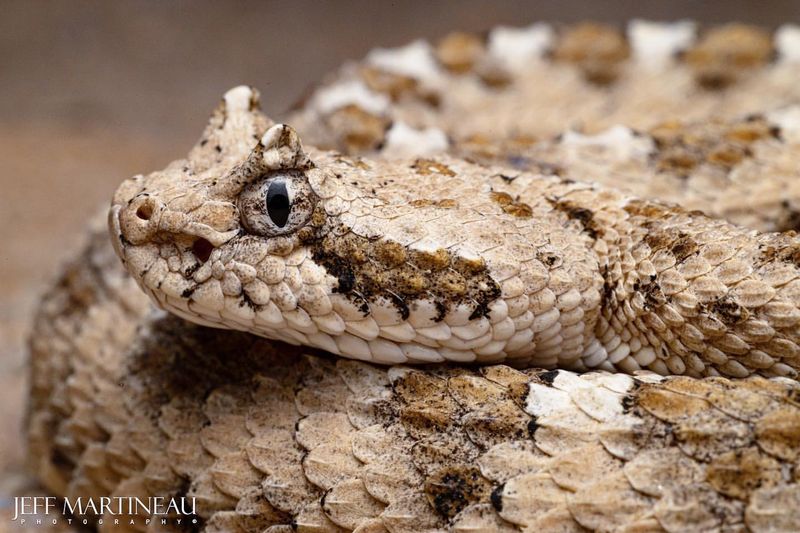
This fascinating reptile is perfectly adapted to the shifting sands of the Mojave and Sonoran deserts. Named for its unique sideways locomotion, this snake can move quickly across hot surfaces without overheating.
Its pale coloration provides excellent camouflage, blending with the desert landscape. The sidewinder’s diet consists primarily of small mammals and lizards, which it hunts using heat-sensing pits located on its face.
This rattlesnake is most active during the cooler hours of the evening and early morning, avoiding the midday heat. Its ability to thrive in such a harsh environment makes it a subject of interest for herpetologists and desert ecologists alike, illustrating the complex adaptations required for survival.
15. Desert Hedgehog
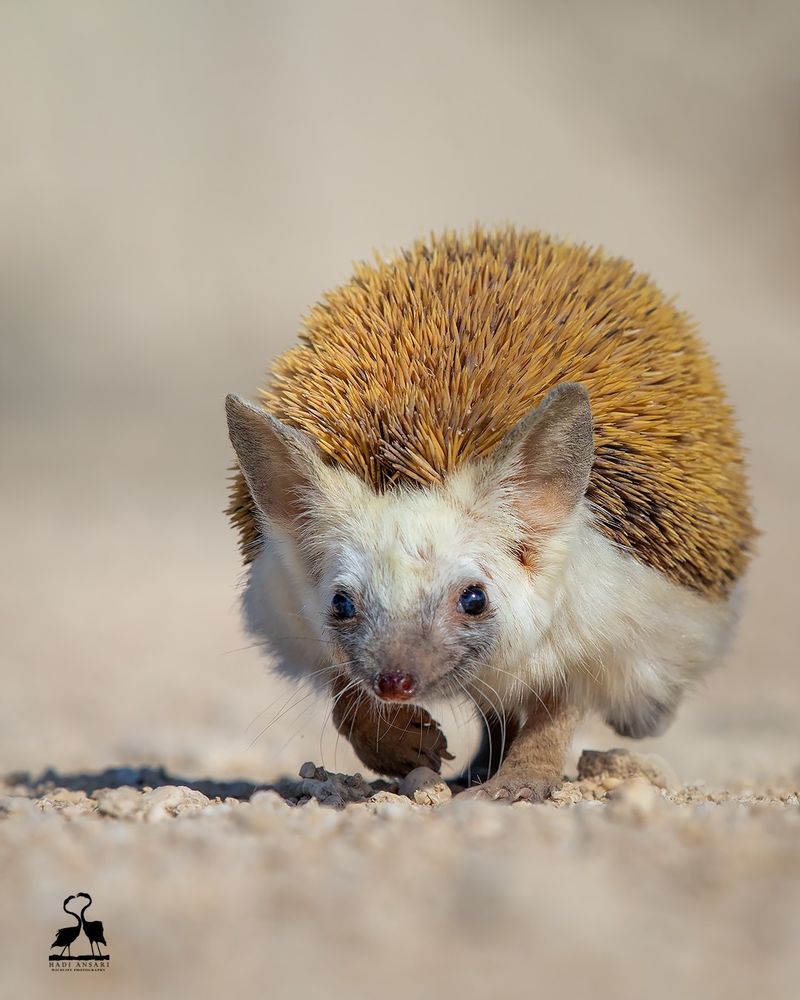
The desert hedgehog is a small but resilient mammal found in the arid regions of the Middle East and North Africa. With its spiny coat, it is well-protected against predators. These hedgehogs are nocturnal, emerging at night to feed on insects, small vertebrates, and occasionally fruits and vegetation.
Their ability to roll into a tight ball, presenting only their spines to threats, is a key defensive strategy. Desert hedgehogs can survive on minimal water, obtaining moisture from their diet and conserving water through specialized kidneys.
Adaptable and resourceful, these animals play a crucial role in their ecosystems, controlling insect populations and serving as prey for larger predators. Their presence in the desert highlights the diversity of life that thrives in these challenging environments.
16. Sahara Silver Ant
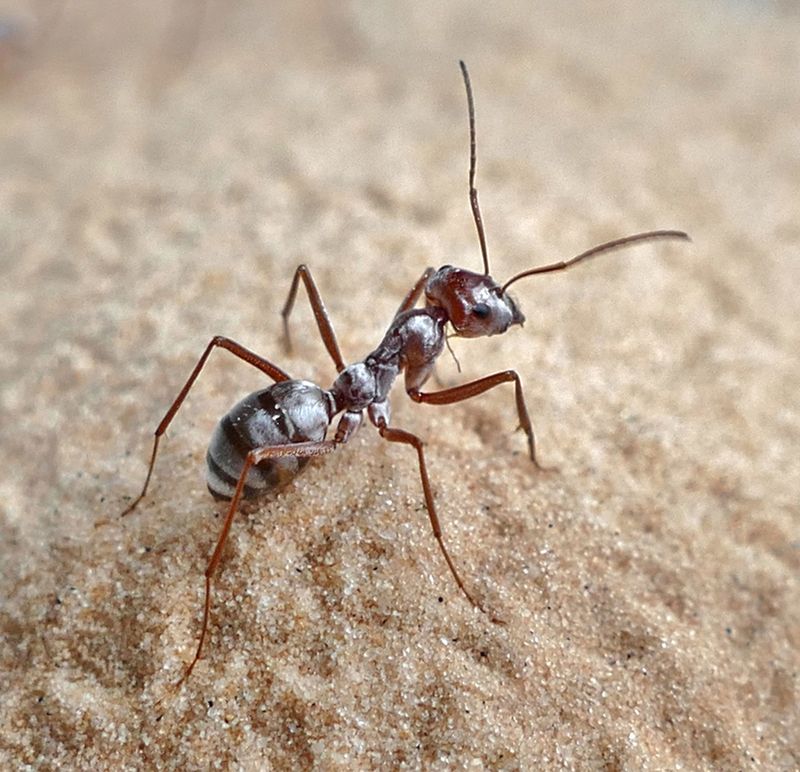
The Sahara silver ant is a remarkable insect known for its ability to withstand extreme temperatures. Found in the Sahara Desert, these ants are active even during the hottest part of the day. Their silver-colored bodies reflect sunlight, preventing overheating.
With long legs that elevate their bodies above the hot sand, Sahara silver ants can move quickly, reducing heat exposure. They are scavengers, feeding on insects that have succumbed to the heat.
Their brief foraging expeditions last only a few minutes, during which they cover large distances in search of food. This unique behavior allows them to exploit a niche in the desert ecosystem, avoiding competition with other animals active during cooler periods.
17 Namib Desert Beetle
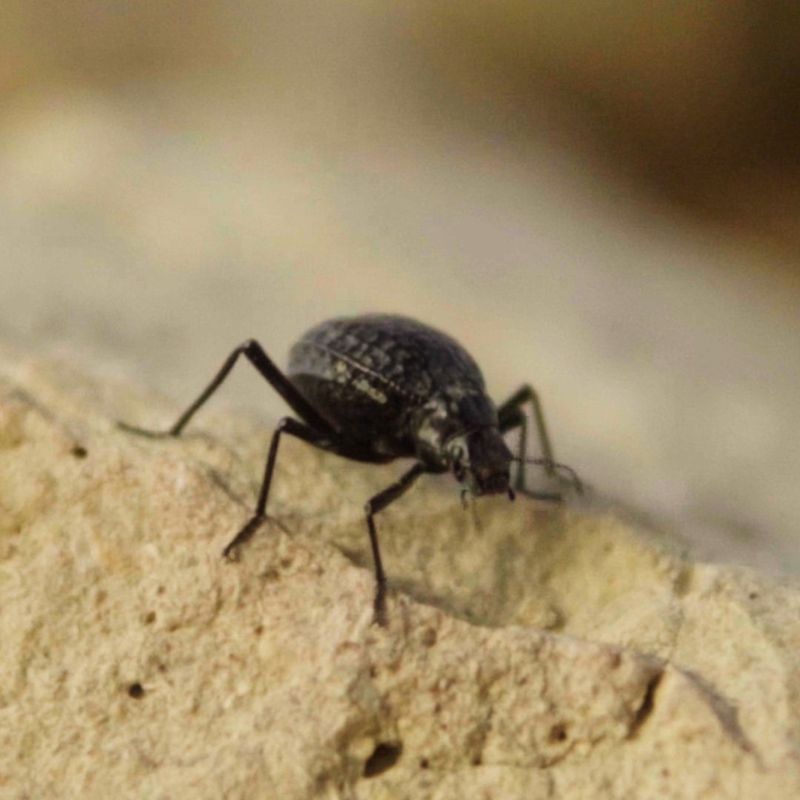
This master of water collection thrives in one of the driest places on Earth. Its black shell is covered with bumps that collect and channel moisture from the morning fog directly into its mouth. This adaptation allows it to survive in an environment with virtually no rainfall.
These beetles are primarily nocturnal, foraging for plant material and detritus during the cooler hours. Their dark coloration helps them absorb heat when temperatures drop.
An essential component of the Namib Desert ecosystem, these beetles play a crucial role in nutrient recycling, breaking down organic material and enriching the soil.
Their unique adaptations offer insights into survival strategies in extreme conditions.
18. Arabian Oryx
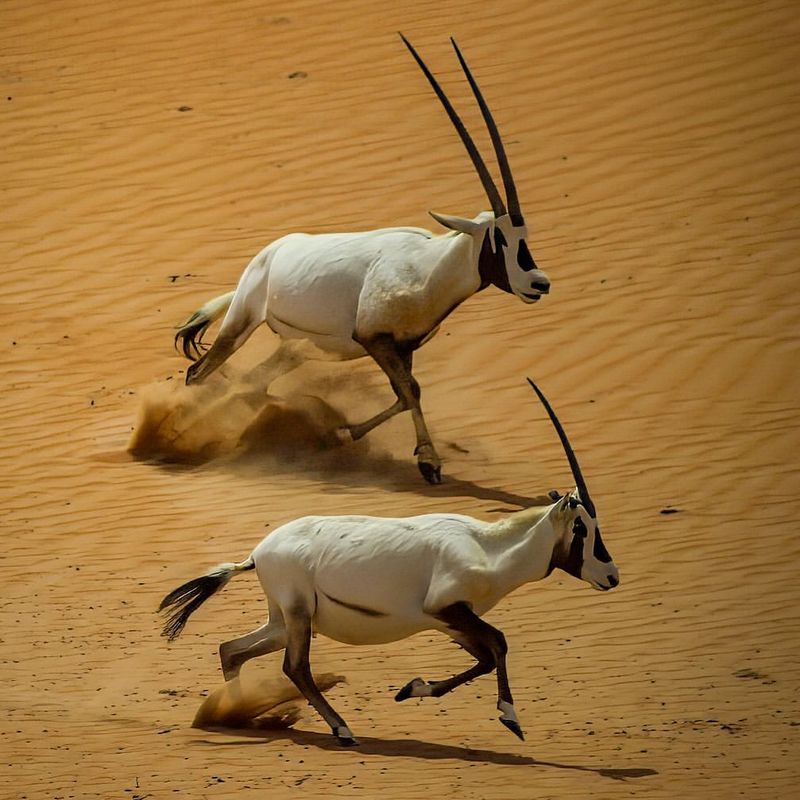
The Arabian oryx is a resilient antelope species, uniquely adapted to the harsh desert environment of the Arabian Peninsula. With a striking white coat that reflects sunlight, it can withstand the intense heat of its habitat.
Oryxes are highly efficient in their water usage, obtaining moisture from the food they consume and rarely needing to drink. They can detect rainfall from a distance and migrate towards it, ensuring access to fresh grazing grounds.
Social animals, Arabian oryxes live in herds that provide protection and aid in locating food. Conservation efforts have successfully brought them back from the brink of extinction, making them a symbol of successful wildlife preservation and a testament to the resilience of desert life.
19. Desert Horned Lizard
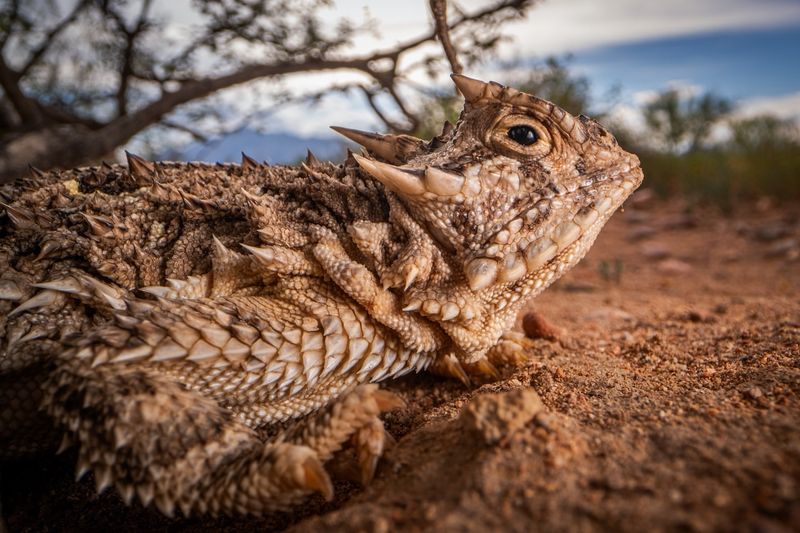
This remarkable reptile is well-camouflaged and adapted to the dry, sandy environments of the American Southwest. Its spiky appearance keeps predators at bay, while its ability to change color helps regulate body temperature and provides camouflage.
Feeding primarily on ants, this lizard uses specialized techniques to capture prey, such as shooting blood from its eyes to ward off predators. This unique defense mechanism is a testament to its adaptation to desert life.
The desert horned lizard’s survival strategies include burrowing into the sand to escape the heat and retaining water from its food. As a key species in its habitat, it plays an important role in controlling insect populations and maintaining ecological balance.

